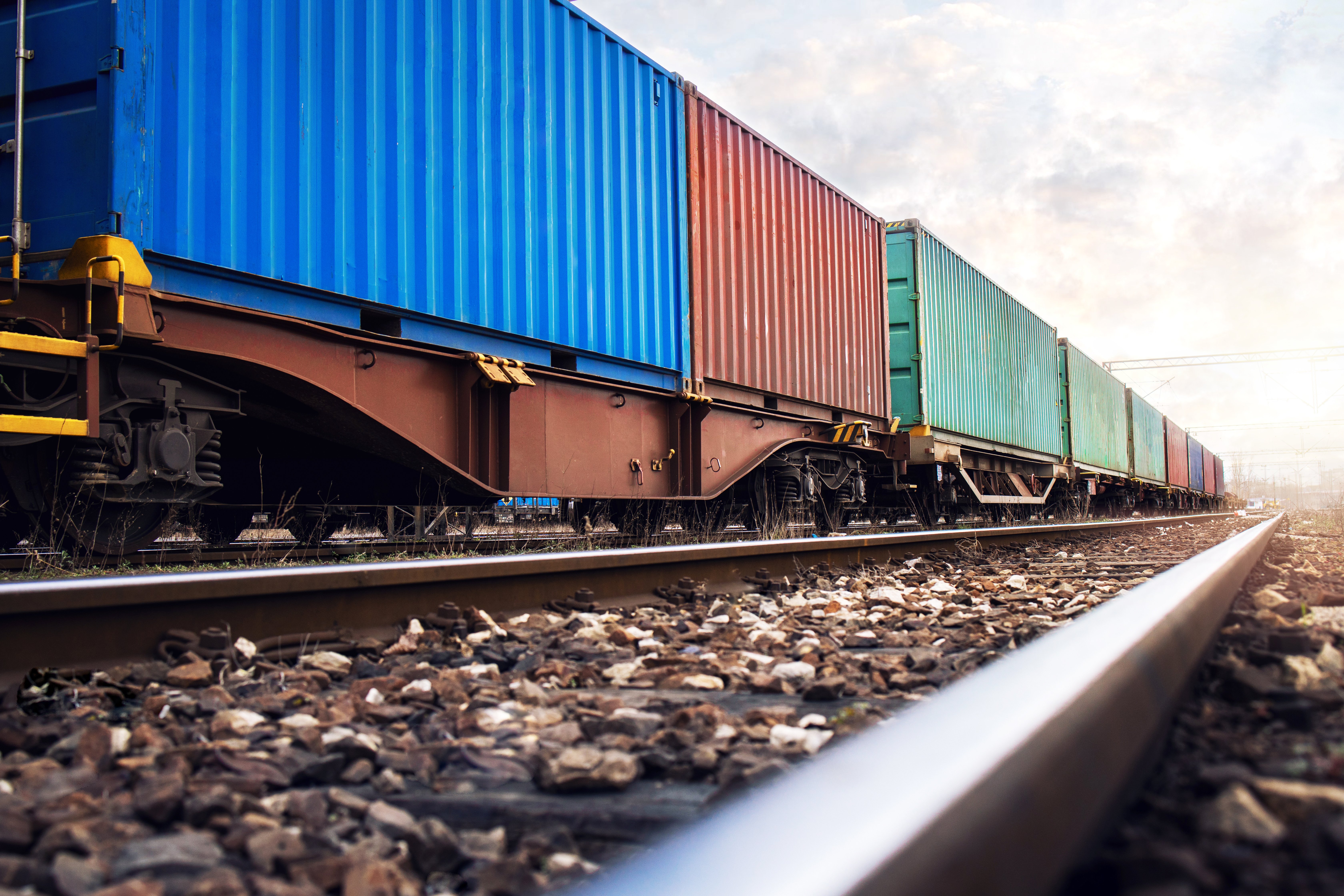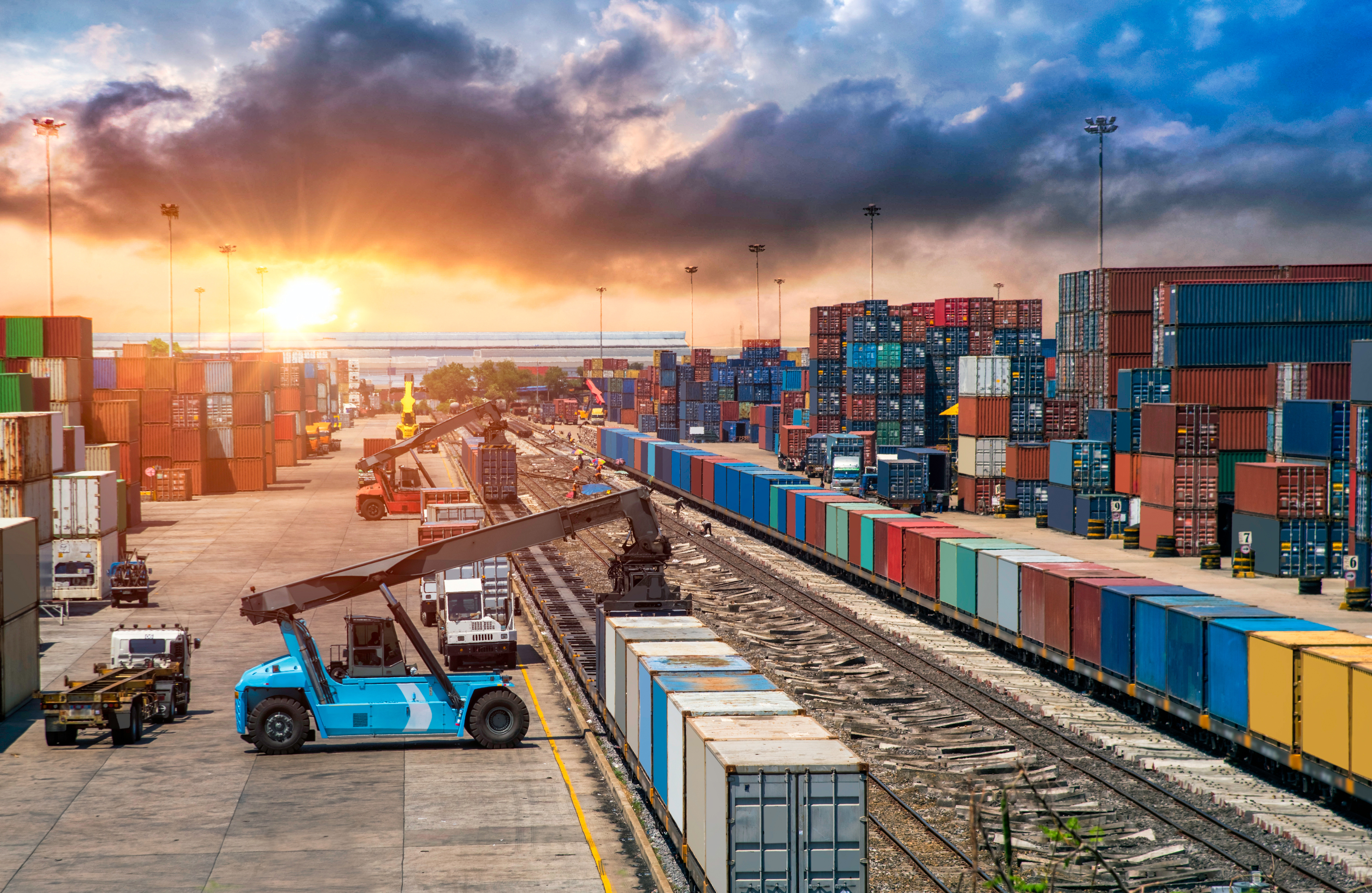When it comes to freight shipping, there are numerous methods available for transporting goods to their destination. And regarding inland freight transportation, two of the most frequently compared and evaluated modes are shipping by rail vs. truck. These modes are prevalent among shippers for their cost-effectiveness, accessibility, and dependability.
While they both feature numerous similarities, shippers must choose only one for an aspect of their shipping process. Hence, we first examine how these two modes are characterized and differentiated before analyzing which will be best in specific scenarios.

What Is Trucking
The fundamental principle of truckload shipping is straightforward. This form of shipping occurs when an entire trailer of a truck is exclusively dedicated to transporting cargo from its origin to its destination. Trucking provides flexibility to shippers by offering numerous variations to this service.
In some cases, it is an end-to-end service, meaning cargo remains on the exact vehicle throughout the journey without stopping and transferring to other trucks. Shippers can also consolidate their freight with other goods to fill a truckload; however, this no longer becomes an end-to-end service.
The flexibility also makes it ideal for a wide range of businesses. For instance, businesses that transport large quantities of goods on a strict timetable can opt for truckload shipping. At the same time, smaller-scale companies can upscale and conveniently run their business by consolidating freight. Trucks come in different types, from vans to flatbed trucks and four, six, and ten-wheelers, making them ideal for several cargoes.
What Is Rail Freight

Similar to trucking, the concept of rail freight can be understood from its name. For this transport mode, shippers move cargo across rain networks on freight trains that carry single and double-stacked containers in multiple railcars. This form of transport significantly impacts several aspects of freight transportation, primarily how the cargo is handled.
Rail shipping has played a crucial role in the global logistics industry for an extended period. Trains make it possible to transport massive quantities of cargo while consuming minimal fuel, making it an excellent option for freight transportation. Freight trains are also customized with wagons and equipment that help to streamline the shipping process.
That said, it’s worth noting that every rail shipment requires an additional mode of transportation to complete the entire journey. Trucks are usually needed to transport the goods to and from rail stations. For this reason, rail shipping is frequently linked with intermodal transportation, which involves more than one transport mode.
What Scenarios Are Each Ideal
The decision to transport freight using either rail or truck requires shippers to consider several essential factors, with both modes offering unique advantages and drawbacks. A careful examination of how each option will hold up under specific scenarios is necessary to arrive at an informed conclusion on the most suitable mode for a particular shipping requirement. Hence, here are some characteristics of both methods to aid your decision process.
● Cost
Regarding cost, rail transportation has a distinct advantage over truck transportation for various reasons. The primary factor that makes rail shipping more cost-effective than a truck is fuel efficiency, especially when transporting goods over long distances. A reason for this is the lower rolling resistance of steel wheels on steel tracks compared to rubber tires on asphalt.
Railcars can also transport much larger quantities of goods than trucks, with one railcar capable of containing the same amount of freight as four full trucks. For instance, the weight limit for trucks in the United States is about 80,000 lbs. In contrast, a freight train can move close to 10,000,000 lbs in a single trip, depending on the number of railcars.
Another factor that makes trains more cost-effective is the significantly lower maintenance cost. Trucks require regular maintenance, which could warrant costly part replacements after covering long distances. On the other hand, trains are more efficient and capable of traveling long distances with far less maintenance. When comparing the cost of shipping freight via rail and truck, rail transportation emerges as the more affordable option.
● Speed
Comparing the speed of rail transportation to trucking is more complex. There are a few factors to consider; for instance, while trucks have the speed advantage for shorter distances, rail transportation can be a more competitive option over long distances in some scenarios.
Typically, trucks follow direct routes thanks to highways, allowing faster delivery of goods. Trucks are generally easier to load and unload than railcars, significantly reducing transit time. However, these advantages diminish when freight is transported over a long distance.
While trains may not reach the top speed of trucks, they maintain a constant speed of about 50mph when actively moving, and when summed up over a long distance, railcars tend to be the faster alternative. That said, train freight also undergoes delays in the shipment process, primarily due to their network of classified yards. Distance is a critical factor to consider when comparing the speed of rail transportation to trucks.
● Stability
Stability in the context of freight transportation refers to a mode’s ability to maintain supply and demand levels and its resilience against disruptive events, such as economic issues, weather conditions, or conflicts. When considering these factors, rail transportation has the upper hand.
Today, the gap between the demand for commercial truckers and the number of available drivers to fill those positions has become significant and inevitably impacts the supply chain. On the flip side, rail transportation has remained relatively stable regardless of driver shortages, alongside other events such as the pandemic and current economic issues.
Rail transport is more resilient to these events because it requires far less labor for each ton of freight shipped. The rail industry also has a much lower turnover rate than the trucking industry, further contributing to its stability.
● Flexibility
We have already mentioned how much flexibility trucking offers shippers compared to trains. Railcars are constrained to fixed routes, which can be detrimental when those routes become inaccessible. On the other hand, trucks can travel on a much more comprehensive range of roads and highways, access more loading and unloading points and give businesses more options regarding freight transportation.
Trucks are also not limited by the availability of rail infrastructure, which may require additional time to transport the goods from the rail yard to their final destination. Finally, trucks offer several shipping options for businesses, from full truckload to less-than-truckload and partial truckload.
● Environmental Impact
Every aspect of the economy has become conscious of the importance of being environmentally responsible. As such, businesses and consumers are starting to gravitate towards eco-friendly and sustainable brands when given the option. In line with this, companies that seek to change their logistics process in favor of sustainability are looking at rail freight as a more eco-friendly transportation mode.
On average, rail shipping is about four times more fuel efficient and emits 75% less greenhouse gas emissions than trucking. The fuel efficiency feature of rail transport helps reduce shipping costs and provides a platform for businesses to promote their sustainability initiatives. With rail transportation, companies can exhibit their commitment to reducing their carbon footprint and preserving the environment.
● Safety
Regarding the safety of transporting goods, rail transportation is advantageous over trucking. This is primarily because rail shipments are not exposed to the same risks of accidents and collisions associated with trucking. Trucking is subject to the unpredictability of several factors, from weather to road conditions, which can increase the likelihood of issues in transit.
In contrast, railcars travel on fixed tracks and are not affected by such variables, which reduces the risk of accidents. Additionally, rail shipments are less susceptible to theft as they offer fewer opportunities for theft during transit. Railyards are typically equipped with 24/7 security, providing an additional protection layer.
Conclusion
There are several ways to ship your freight, and depending on your business type and shipping requirements, it’s essential to take the time and determine which method is best. Alternatively, shippers can also explore transloading services, which offer the opportunity to take advantage of rail and truck.
With transloading, shippers can combine the speed and flexibility of trucking with the cost-saving, stability, and safety of rail shipping. Individually or combined, rail and truck shipping offers several benefits that can help to streamline your supply chain.
